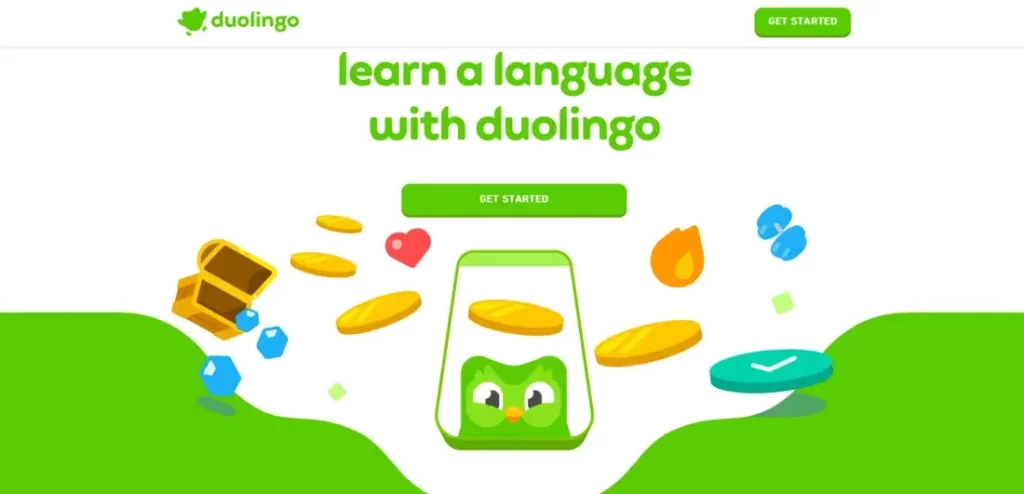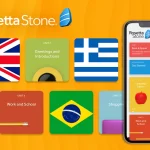Duolingo is one of the most popular language learning apps, with over 500 million downloads. It uses fun, game-like lessons to teach vocabulary, grammar, listening, speaking and more across over 30 languages. However, as learners progress to more advanced levels, some wonder if Duolingo is still effective or if other resources are needed. This article explores Can Duolingo help with advanced language skills?
Duolingo’s Strengths for Beginners
Duolingo is exceptionally good for beginners looking to gain a basic foundation. Its bite-sized lessons make it easy to fit practice into small gaps of free time. The app capitalizes on principles of spaced repetition, ensuring vocabulary sticks. Plus games and point systems create a rewarding, addictive experience that keeps motivation high.
This makes Duolingo ideal for travelers wishing to pick up common phrases or business people wanting basic communication abilities. The vast majority of lessons focus on high-frequency conversational vocabulary and grammar suited for real world situations. Pronunciation and listening practice also prepare learners to understand and speak the language.
For all these reasons, Duolingo can quickly build functional language abilities for simple conversations, transactions, directions, small talk and more. It develops reading and writing as well, though speaking and listening see more emphasis on the app.
Where Duolingo Falls Short for Advanced Learners
As beneficial as Duolingo is for beginners, its usefulness decreases the more advanced a learner becomes. There are clear limitations in the app holding fluent speakers back.
Firstly, the lessons cap at an approximate A2 to B1 level on the CEFR scale – meaning basic to intermediate. There are no lessons targeted specifically for upper intermediate or advanced learners to further vocab and grammar mastery. Opportunities for extended writing, reading, listening and speaking practice are also limited.
Some criticize Duolingo for not explaining grammar rules overtly as well. It uses an inductive teaching method – giving examples and having users infer patterns. This works well for basics but leaves advanced learners with gaps regarding exceptions, nuances and technical rules.
Lastly, as Duolingo lessons progress, the vocabulary shifts increasingly toward the obscure – like “narwhal” or “vestibule” in Spanish. This fringe vocab appears less often in real world situations. Learners aiming for fluency would benefit more from expanded practice of practical vocab and conversational grammar at higher levels.
How to Supplement with Other Resources
Duolingo can certainly take you to an intermediate level – but at advanced stages, it works best paired with other tools. Here are some tips:
Use Duolingo for maintenance: Continue using Duolingo to retain what you’ve learned so far. The spaced repetition will help cement basics in long-term memory.
Study grammar guides: Get books or online grammar guides to learn rules, exceptions and nuances missing from Duolingo. Studying technical grammar is essential for mastery.
Read, listen and watch: Immerse yourself in native media – books, news, television, film, music and more. This expands vocabulary and exposes you to more advanced grammar and expressions.
Use flashcard apps: Apps like Anki are excellent for mastering new vocabulary. The spaced repetition and multimedia options aid memorization and retention at scale.
Speak with native partners: Conversing with advanced speakers provides indispensable speaking/listening practice and feedback. Sites like Verbling connect you with conversation partners.
The key is optimizing Duolingo for review and fundamentals while using complementary resources to address its limitations. This balanced approach can boost fluency.
Extra Tips to Go from Intermediate to Advanced
Reaching an advanced or fluent level requires tremendous commitment but is achievable. Alongside tools above, these tips can help:
– Set a weekly learning goal (e.g. 5+ hours per week) and stick to it
– Test yourself often (apps, practice tests) to identify and improve weak spots
– Think, write and speak about your interests in the language – don’t just practice random vocab
– Surround yourself with native media (change phone/Netflix language) – Use sites like iTalki for professional lesson plans tailored to your level – Visit a country where the language is spoken for full immersion
Over time, with smart resources and dedication, Duolingo can act as a piece of the puzzle for attaining an advanced level of language proficiency.
Conclusion
Duolingo undoubtedly has limitations for taking learners to advanced, fluent levels – however, it remains useful as part of a larger learning strategy. It can develop excellent foundations and maintain those skills while other tools address higher complexities like technical grammar, expanded vocabulary and advanced listening/speaking. Combining the engaging Duolingo model with traditional studying, immersive reading/listening and conversation practice can drive proficiency to advanced milestones. With persistence and the right supplemental resources, Duolingo can still provide value on the journey to fluency. I sincerely hope you find this “Can Duolingo help with advanced language skills?” article helpful.






